Summer Research Fellowships provide summer support to doctoral students so they may focus exclusively on their dissertation research. The Summer Research Fellowship is intended to enable students to complete their degree more quickly and supports students who normally do not have funding during the summer. Thanks to many private donors, 33 graduate students are spending this summer focusing exclusively on their dissertation research. The students were selected for the quality of their work, their readiness to productively use the time this summer, and their mentors' willingness to work with them and provide guidance.
We’re pleased to present 33 Summer Research Fellowships for 2021 — and to share the honorees’ own descriptions of their research.

“My research examines how alternative food networks (AFNs) in Turkey enact autonomy by connecting various stakeholders, including small-scale producers, cooperatives, and consumers across the country, under a solidarity-based organization. AFNs emerged in Turkey during the 2000s to resist neoliberal market relations and monopolies and adhere to the principles of ecological agriculture, seed conservation, and women producers’ empowerment through an unconventional production, distribution, and consumption network. My study conceptualizes AFNs’ commitment to collaboration and socially and ecologically responsible production as acts of autonomy and revisits the geographies of autonomy through a feminist political geography framework.
Through a multi-sited ethnography, based primarily on in-depth interviews and participatory observation, I analyze how these solidarity initiatives generate networks across multiple scales and alter mainstream production, distribution, and consumption structures.”

“My dissertation, entitled “Identity Formation in Sacred Contexts of Aegean Thrace,” explores four sanctuaries in the region of Aegean Thrace, the coastal zone of northern Greece, and the northernmost islands: the Sanctuary of the Great Gods on Samothrace, the Sanctuary of Apollo at Messembria-Zone, the Herakleion on Thasos, and the Acropolis of Oisyme. My goal is to shed light on how Greeks and Thracians interacted at these sites to better understand the process of identity formation in this region from the 7th century BCE through the 4th century BCE.
Sanctuaries here are typically interpreted as Greek foundations, but most appropriated loci of earlier Thracian ritual activity. Site publications have not fully engaged the archaeological evidence that suggests processes of accommodation, negotiation, and adaptation in local ritual environments. I approach these sanctuaries as ritual landscapes—environments shaped by religious activity—and will analyze their occupational histories through a close study of their artifact assemblages.
My dissertation considers the development of cultural identities unique to Aegean Thrace, which were created and maintained through negotiations between Greek and Thracian populations. My approach is informed by glocalization theory, which emphasizes the preservation of the local in response to globalizing influences. The contexts and material patterns I examine will allow me to assess the nature of cultural production in a ritual context as part of a process of identity formation.”

“What do we do when we believe something? The standard view in the literature posits that believing something just involves being sufficiently confident in it. More recently, other views have argued that believing something involves being willing to act on it. In my dissertation I propose a new answer: We believe something when we have settled a question. For example, my belief that Carolina blue is the prettiest color just consists in my having settled the question: “Which color is the prettiest?” in a particular way. I argue that this account of belief (unlike other accounts in the literature) can give us a better understanding of the role that beliefs seem to play in our relationship with others and in our conception of ourselves. Which questions we are interested in and how we settle them can shape who we are as a person and how we relate to others.
My dissertation argues that beliefs are important for our relationships with others and in our conception of ourselves and that this fact can best be explained if believing something settles a question. I also consider interesting consequences of this view of belief for how we should think about what it is rational to believe.”
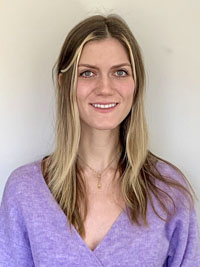
“Viral hepatitis claims more than a million lives annually and surpasses HIV, tuberculosis, and malaria as one of the leading global infectious killer. More than 60 million individuals in sub-Saharan Africa are infected with chronic hepatitis B virus (HBV). The Democratic Republic of the Congo (DRC) introduced a three-dose HBV vaccine (HepB3) in 2007, and yet HBV prevalence remains high, especially among children under age five. HBV exposure at a young age is associated with more severe liver disease; if infected at birth via mother-to-child transmission (MTCT), an infant has a 70 to 90 percent chance of developing chronic HBV infection and 25 percent chance of mortality.
Vaccination, particularly administration of the birth dose vaccine against HBV (HepB-BD) within 24 hours of delivery, is one of the most effective tools as it interrupts MTCT in over 95 percent of cases. Because few sub-Saharan countries currently distribute HepB-BD, little knowledge or guidance exists for effective implementation of timely vaccine at the facility level.
My research will use a mixed-methods approach to investigate barriers to uptake of birth dose vaccines both at the community and facility levels in the Kinshasa Province, DRC. Guided by community input, my study will develop an implementation strategy to overcome barriers and to streamline vaccine delivery services by combining HepB-BD with other routine birth dose vaccines: oral polio (OPV0) and tuberculosis (BCG).”
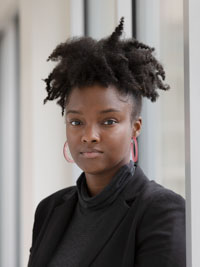
“My research explores Black women’s digital culture and how Black women’s experiences on social media reflect the structures of social inequalities offline. While it is never explicitly stated, there is a default whiteness of virtual spaces and inherent masculine bias in technology. Therefore, Black women’s online presence marks them as deviant in these spaces. Following the frameworks of Critical Technocultural Discourse Analysis (CTDA) and Black Cyberfeminism I privilege the experiences and perspectives of Black women and how they employ technology for their own needs to advocate for more inclusive beauty standards.
Focused on Black women’s agency in online beauty culture, the questions that drive my research are: How do race and gender work together to structure Black women’s experiences in U.S.-beauty culture? How are Black feminine aesthetics rendered valuable and visible even as Black female bodies are devalued and rendered invisible? How is Black femaleness used as an online technology that may be appropriated by non-Black and/or non-female content creators in ways that render Black women invisible? Ultimately, I study how white technocultural practices such as antiblackness, productivity, and commodification impact Black women’s experiences online (such as the appropriation of Black female aesthetics for engagement) and how Black women utilize social media to resist white technocultural practices.”

“In an online learning environment, learners need to communicate with others to validate or reshape their cognitive understanding of new knowledge and cultivate a sense of learning community. Collaborative activity is an essential way to generate a rich dialogue and establish a community. My study identifies the relationship between dialogue in collaborative activities and student online learning in a small-scale case study. I explore two research questions: 1) What dialogue patterns do learners have when they participate in collaborative activities in an online course? and 2) How does student-peer dialogue and student-teacher dialogue affect the quality of these students online learning and their satisfaction?
To address these questions, students’ forum postings and group discussion voice recordings will be coded according to both literature-derived themes and what emerged in the study field. Then, conversational archetypes can be identified by mapping the conversation network in between collaborative activities. Finally, student satisfaction and achievement will be analyzed to address collaboration-focused questions. The pattern and quality of student-peer dialogue and student-instructor dialogue will be further analyzed to gain a full picture of its impact on student satisfaction and meaningful learning. The analysis of dialogue is intended to demonstrate the quality of dialogue in online discourse and support calls for more explorations of online instructional design methods.”

“Hypoxia, or low levels of environmental oxygen, is an increasingly recurrent problem for coastal and estuarine habitats, however, the intertidal habitat has remained understudied. The Tigriopus californicus copepod is a small zooplankton common in the intertidal of West Coast rocky beaches, and although there has been much interest in its ability to endure rising temperatures, very little is known about its ability to withstand extended periods of hypoxia. I identified a geographic trend in hypoxia tolerance among populations of T. californicus: southern individuals died more often from acute hypoxia exposure than northern individuals.
This summer, I will take field measurements along the California coastline to see if northern locations experience more hypoxia in their environment than southern locations. This would provide an environmental basis for the trend in hypoxia tolerance I observed. Many previous studies of T. californicus relied on behavioral indicators of stress in a laboratory setting to assess tolerance. While I am in California, I will also record whether these behaviors (refuge-seeking, inactivity, etc.) are employed by the copepods in their native habitats. Lastly, mitochondria are the cellular component that utilizes oxygen, and I will measure hypoxia tolerance of different mitochondrial lineages in T. californicus to explore whether the trend in hypoxia tolerance I observed has a genetic basis. Together, these projects will inform how intertidal organisms like T. californicus experience and survive hypoxic events.”
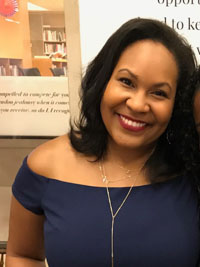
“While prior scholarship documents complex and counterintuitive patterns of mental health status across and within racial/ethnic groups, the explanations for these patterns remain poorly understood. My three-article dissertation project addresses this critical gap by investigating the underlying processes that link race/ethnicity to depressive symptoms from adolescence to early midlife in the United States. I draw from cross-disciplinary theoretical and methodological approaches and utilize recently released data from the National Longitudinal Study of Adolescent to Adult Health.
First, I document associations between a range of socioeconomic measures (e.g., educational attainment, parent’s socioeconomic background, wealth, etc.) in different life stages and depressive symptoms in early midlife. I also examine these relationships across and within racial/ethnic groups. Next, I investigate how access to material resources and depression reciprocally influence each other from adolescence to early midlife and how these processes vary across and within racial/ethnic groups. Finally, I document and describe the distributions of several coping resources across and within racial/ethnic groups and test the degree to which the collective influence of socioeconomic resources and coping measures from adolescence to young adulthood explain racial/ethnic disparities in depression in early midlife.
My dissertation research advances understanding of when in the early life course and how access to material and coping resources, and exposure to social contextual stressors, contribute to the development of racial/ethnic disparities in mental health among adults in the United States.”
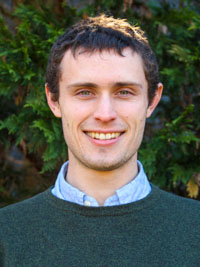
“The interplay between mathematics and theoretical physics has been quite productive over the last several decades. One recent example of this interplay is known as the 3D mirror symmetry conjecture. The 3D mirror symmetry conjecture postulates deep relationships between pairs of seemingly unrelated geometric spaces, called a 3D mirror dual pair. From a mathematical perspective, these relationships are thought to be best described using the language of enumerative geometry, which is a centuries-old subject that involves counting configurations of geometric objects inside an ambient space (e.g. configurations of lines inside the plane, curves inside the sphere, etc.). In the study of 3D mirror symmetry, the relevant enumerative geometric data can be concisely packaged into an object called the vertex function. The vertex functions of a 3D mirror dual pair are expected to be equivalent.
In my research, I have proven aspects of the 3D mirror symmetry conjecture in certain cases. I hope to extend the known techniques for studying vertex functions to the class of spaces called bow varieties, which are thought to provide a unified framework for the study of 3D mirror symmetry. This would then set the stage for a full investigation of the 3D mirror symmetry conjecture.”

“Approximately 23 percent of the nearly six million car crashes that occur in the United States each year are attributable to adverse weather conditions. In the Carolinas, fatalities related to automobile accidents have increased significantly over the last five years, with more than 2,500 individuals losing their lives in 2018 alone. However, the frequency of severe crash outcomes has not been equally distributed, with rural roads experiencing a 2.6 times higher rate of fatal crashes than those designated as urban. Yet, despite these significant historical disparities, few studies to date have attempted to investigate differences in weather-related crash risk between rural and urban spaces.
This dissertation addresses these shortcomings by assessing the influence of precipitation on the relative risk of experiencing an automobile accident across the rural-urban gradient. This is accomplished through the incorporation of high-resolution (hourly) precipitation data and an innovative rurality classification scheme, which allows this project to be among the first to illuminate differences in crash risk while considering the interconnectedness of social (rurality) and physical (precipitation) factors. Ultimately, as one of the fastest growing regions in the country and as the changing climate increases the risk for extreme precipitation events in the future, my dissertation project will provide meaningful results for improving driver safety in the Carolinas for years to come.”

“My dissertation studies the representation of Mary Stuart within Enlightenment historiography to explore the religious, political, and literary construction of queenship and female sovereignty in the eighteenth century and beyond. As a historical queen tragically executed within contested circumstances, Mary Stuart’s life transformed into an allegory of women’s disenfranchisement during the Enlightenment. Unlike sixteenth-century representations, which denounced Mary Stuart as a papist tyrant, eighteenth-century narratives vindicate the beheaded queen as a sympathetic heroine, and fierce historical discourse erupted around Mary’s alleged culpability and the legality of her execution. Considering the state policy of Catholic exclusion in the eighteenth century—wherein Catholics were prohibited from holding public office—the question must be asked: Why, in a period when Catholics experienced such heavy prohibition, would a French-raised Catholic queen of Scotland attain such an iconic status in Britain?
My project demonstrates how Mary Stuart became emblematic of the ways that law and religion intersected to divest women of their natural rights. Exploring literary representations of religious esotericism, empirical forgeries, uncanny horror, and masquerade in genres including novels, secret histories, antiquarian discourse, and twenty-first century film and media, my dissertation argues that Mary Stuart proved to be more than just a tragic heroine—she became the paradigm of the dangerous and complicated duality of women’s public and private virtue in the eighteenth century and beyond.”

“Law enforcement officers (LEO) provide critical emergency services to the community yet experience a high rate of musculoskeletal (MSK) injuries. A critical gap exists in determining the impact of job-related workload on work-related MSK injuries and job performance. Survey-based workload monitoring has shown promising results in athletics to improve injury prevention efforts. By utilizing existing LEO reporting systems and the NASA-Task Load Index, both external (physical demand) and internal (psychophysiological response) loads can be examined to provide user-friendly estimates of LEO workloads.
My research examines the feasibility of workload monitoring among LEO to determine if alterations in workload can predict changes in MSK injury risk factors and predictors of job performance. Fifty local LEO will complete a workload survey after each shift for eight weeks. Feasibility will be examined by determining retention rates, and their adherence to, usability, and acceptability of the workload monitoring. All LEO will perform reaction time, lower extremity strength and power, movement quality, grip strength, and muscle fatigability assessments prior to and following the eight weeks. Workload will be examined as a ratio of the average acute workload (five shifts) to the average chronic workload (15 shifts). If this workload monitoring strategy is shown to be feasible and sensitive to changes in MSK injury risk factors, it may provide a time-efficient method to monitor the long-term health and readiness of LEO.”

“My dissertation research focuses on the material effects of the Ptolemaic Empire in Early Hellenistic Greece (late fourth to mid-second century BCE) through an interdisciplinary study of the archaeological record at two sites occupied by the Ptolemies (Koroni in Attica and Arsinoe-Methana in the eastern Peloponnese), a comparison with the material remains from other sites in each of those two regions, and the epigraphic and numismatic record of Ptolemaic activities in the Greek Mainland.
I begin with an archaeological reassessment of each of my two case study sites to understand how the infrastructure, activities, and community structures were realigned in response to Ptolemaic garrisons and economic investments. The second section addresses trade and the economy to examine how Greece contributes to Ptolemaic economic power in Aegean trading networks and, in return, how Ptolemaic minting, agriculture, and quarrying affected local Greek economic structures.
In both stages of the project, pottery collected and stored in each site and region is the core dataset. Since ceramics were a crucial part of daily life in antiquity and containers for the exchange of goods, a pottery study will help me assess the operations within a settlement and its trade patterns. I demonstrate that Ptolemaic imperialism is enacted in Greece in ways that are shared across the empire while acknowledging that local histories also shaped these modes of interaction.”

“My project traces how the concept of dignity developed from a word associated with aristocratic hierarchy and rank to a fundamental value of democratic equality in nineteenth-century America. It also uncovers the way this new definition of dignity preserves much of the old logic of aristocratic exclusivity beneath the surface. I analyze authors including Nathaniel Hawthorne, Frederick Douglass, Emily Dickinson, Mark Twain, and Pauline Hopkins, widely regarded as democratic figures, who nevertheless exhibit a paradoxical intertwining of democratic equality and aristocratic exclusivity in their discussions of dignity. I investigate how many of these authors portray a process where the things that made someone dignified in Old World aristocracy, such as heritable titles and property, are replaced with democratic virtues like self-reliance, equality, and hard work.
However, these authors also demonstrate that many Americans still relied on a comparative sense of who is more democratic to determine who is most dignified. Often, this hierarchy falls along racial lines, contributing to the development of a racialized American caste system. Ultimately, I argue that to understand dignity in the context even of modern U.S. democracy, we must be mindful of the aristocratic system from which the concept originally derived and the exclusivity that continues to thrive beneath the surface.”
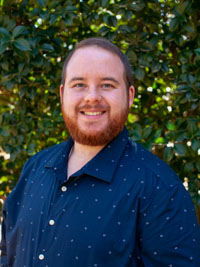
“The time of stable party politics in Western Europe is over. The number of party members, the number of voters supporting the same parties across election, and even the number of voters overall are in decline. Challenger parties are also becoming stronger and more common, particularly on the far right.
My dissertation argues that one critical cause of the radical revisions to existing party systems in the past 30 years is the weakening of party brands — the image of parties in voters’ minds of who parties are and what they stand for — among the mainstream parties of Europe. In particular, my research argues that we need to think more holistically about the factors that contribute to a party’s clear brand in the mind of voters.
While positional convergence and grand coalitions have been commonly linked to party brand decay, I argue that we also need to consider how distinct a party’s issue emphasis is from the other parties in an election, the stability of positions and issue appeals, and the clarity with which party positions are articulated and communicated. In order to investigate these claims, I use cross-national observational survey data, experimental methods, and qualitative case studies as part of multimethod investigation into the causes and effects of the weakening of party brands. ”
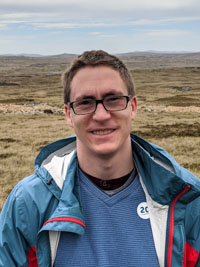
“In the social sciences, we know that data quality can be an issue. Poor data quality can lead to concerns of external and internal validity. We often deal with data quality issues by discarding data or using poor data regardless. This can lead to measurement error and to increased expenses. In my dissertation, I tackle three sources of data quality concerns related to surveys.
First, I develop a general statistical model to estimate uncertainty about survey data when two sets of information exist for respondents, but we are not sure whether the two sets came from the same individual. I apply this model to two specific cases: 1) when re-interviews are done to assess survey quality, and 2) panel surveys. Next, in collaboration with Jim Qian at Princeton University and Brandon de la Cuesta at Stanford University, I examine how interviewers can impact treatment effects in survey and lab-in-field experiments. We theorize different interviewers as leading to different treatment effects. We test whether interviewer characteristics, such as age, experience, and quality, impact treatment effects. This has implication for external validity. Lastly, I examine data quality implications of the presentation of conjoint survey experiments where respondents view randomly created profiles and are asked questions about them. In this project, I explore the ways in which visual presentations of these profiles impact treatment estimates. ”
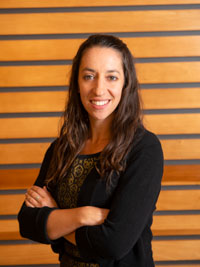
“Intimate partner violence (IPV), also referred to as domestic violence describes any physical, psychological, or sexual abuse by a current/former intimate partner. IPV can escalate to homicide, but less attention has been paid to how IPV coincides with suicide. The National Violent Death Reporting System (NVDRS) is the leading data source in the United States for information about fatal violence, but NVDRS does not systematically record IPV circumstances for suicides. IPV information is only recorded in NVDRS for homicides.
I use text mining and supervised machine learning to detect whether IPV was a precipitating factor for all suicide deaths from 2013 to 2018 based on written information from death narratives in NVDRS. I also characterize typologies of IPV-related suicides using a latent class analysis. Finally, I determine how typologies differ for men and women suicide decedents, report which typologies coincide more with firearm and non-firearm suicide, and determine which typologies are likely to result in homicide-suicide compared to suicide-only.
My dissertation will be the first project to systematically examine all IPV-related suicides using national data. Results may guide violence prevention programs to target changeable, shared risk and protective factors for optimal impact. Findings can also inform tailoring of interventions with at-risk populations.”
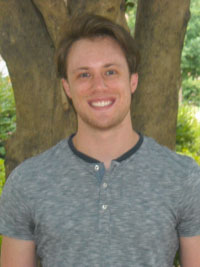
“In my research, I study equations that model wave behavior occurring on a broad class of spacetime geometries. In particular, I study how the energy of damped waves (waves equipped with a friction mechanism) decays over time within bounded regions of space (local energy decay). The damping is utilized in an effort to demonstrate local energy decay on spacetimes with trapping, which contain regions where waves (and their energy) must stay for an infinite amount of time.
Examples of spacetimes with trapping are black holes, which come from general relativity. Black holes possess a region called the photon sphere in which light is trapped forever, stuck sitting between the region where it can escape the enormous gravitational effect of the black hole and the region where it succumbs to this pull and is torn into the black hole (the latter region is called the event horizon). This makes genuine local energy decay for un-damped waves impossible — one must incur a loss of information.
In my work, I add in damping and enforce a condition called geometric control in order to prevent the loss of such information, which requires that all trapped trajectories encounter the region where the damping takes effect. Since local energy decay is known for non-trapping spacetimes, the hope is that the aforementioned additions enforce decay in the trapped region — the only place where issues could occur.”
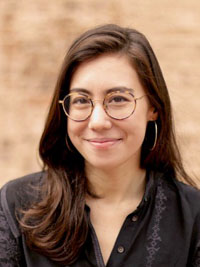
“My research project addresses relationships between Asian Americanness and Blackness though film and television. While critical race and critical ethnic studies often focus on one racialized group, my research is part of a critical movement to understand racialized groups not as formed by a fixed, singular identity, but by porous relationships informed by hierarchies of racial and gendered power. This interdisciplinary project bridges Black studies, Black feminist theory, Asian American studies, film studies, and relational racialization studies.
Through readings of popular screen media, the author argues that anti-Black structures are and have been essential to how Asian Americanness has been constructed as a racial category, from the “coolie” laborer, to the model minority myth, to the idea of “yellow peril.” The project analyzes the popular narratives that circulate in media about what Asian Americanness is and how it relates to Blackness and anti-Blackness through the lens of three everyday urban spaces: the Asian-owned convenience store, the college campus, and the freeway, focusing on films such as Do the Right Thing, Gook, and TV series Kim’s Convenience, Dear White People, Grown-ish, and Atlanta. Working with themes of Asian in/visibility, opacity, and representation, this research charts the path of an Asianness that moves toward the abolition of oppressive racial hierarchies by embracing the opacities of the Asian American experience.”

“Chinese gay, bisexual, and other men who have sex with men (GBMSM) are disproportionately affected by the HIV epidemic in China. However, oral HIV pre-exposure prophylaxis (PrEP)is rarely utilized by Chinese GBMSM as a safe and effective prevention tool. By December 2020, there were only 4,500-5,000 PrEP users reported by official PrEP demonstration studies in China, whereas 2.5 million Chinese GBMSM are estimated at substantial risk of HIV infection. Using a mixed-methods approach, my dissertation research aims to understand key barriers and facilitators towards PrEP uptake among Chinese GBMSM and develop and pilot test a mobile phone-enabled intervention (the PrEP mini-app) to increase GBMSM’s intention to use PrEP and actual initiation.
My dissertation research will add to our current knowledge of the specific needs among Chinese GBMSM in terms of using PrEP as an HIV prevention strategy and how their concerns and actual PrEP use behaviors may change with exposure to the PrEP mini-app. This will help further refine the app to better meet GBMSM’s need and inform the broader implementation of mobile health-enabled HIV prevention interventions in contrast to traditional in-person interventions, paving out the way for a rapid PrEP roll-out in China.”

“Diverse animals, including various fish, reptiles, and birds, detect Earth’s magnetic field and use it as a cue to navigate during long-distance migrations. The ability of animals to detect magnetic fields, known as magnetoreception, enables some species to accomplish extraordinary navigational tasks that resemble what humans can achieve using Global Positioning System (GPS). Despite extensive evidence for magnetoreception in many species, how animals detect and process magnetic field information remains a major, unsolved mystery of sensory biology.
My research uses techniques and tools of neuroscience to investigate how the brain of a fish detects magnetic fields. Neural activation studies will be conducted on the oyster toadfish (Opsanus tau). A widely used marker of neural activation is the immediate early gene, c-fos, because it is expressed within minutes after a neuron becomes active in response to a stimulus. The protein product of c-fos expression can be easily detected using standard research techniques to show changes in expression in particular areas of the brain. If a brain region is involved in magnetoreception, then the density of c-fos-expressing neurons will be higher in that area. My findings are likely to reveal for the first time which brain areas function in the detection and processing of magnetic information.”

“Despite ongoing federal support for abstinence-only sex education, states mandate a diversity of curricular standards. California requires five years of comprehensive, medically accurate curriculum that must be inclusive of LGBTQ identities, whereas Texas does not require sex education, but, if offered, must emphasize that abstinence until marriage is the only way to avoid unintended pregnancy, and that LGBTQ relationships are unsafe and immoral.
My dissertation explores the causes and consequences of these drastically different policies for sex educators through three studies: 1) predicting what state-level factors are associated with adopting comprehensive curriculum; 2) comparing how policy is translated into practice by observing teacher training classes in three states with divergent curricular standards, CA, TX, and NC; and 3) examining how state standards are interpreted and deployed through in-depth interviews with educators across CA, TX, and NC.
This study advances the field’s understanding of how the state and citizens interact, namely how states attempt to intervene in the private lives of citizens and how citizens negotiate, contest, and resist these interventions. By demonstrating how knowledge regarding sex, sexuality, and consent is constructed, deployed, and negotiated by policymakers and educators, this study contributes to broader public debates regarding how to mitigate sexual violence, reduce unintended pregnancies and STD infections, and promote LGBTQ inclusion.”
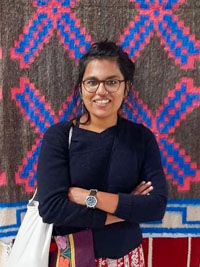
“The goal of my dissertation project is to understand the social construction and contestation of Blackness in Tunisia and Tunisian diaspora in France. More specifically, I am interested in its relationship with other racialized identities of Arabness and Muslimness. Among others, I look at how Blackness is imagined, how racism is manifested and experienced, and the many ways in which racialized ideas of Blackness are challenged (through protests and activism, but also music and art). I plan to collect data in south Tunisia where there is a significant population of Black Tunisians as well as Sub-Saharan migrants.”
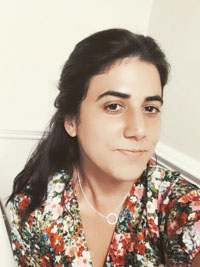
“My project engages with an imagological approach to the representation of the Dutch in a variety of Spanish texts written during the 16th and 17th centuries. This research represents a fresh view to look at traditional questions concerning the construction of the Dutch as the Other. In Spain, the Dutch Other was coterminous with its campaigns of maritime imperial expansion that began in the Americas in the 15th century and extended to Asia in the mid 16th century. The Spanish Habsburgs ruled the provinces of the Netherlands (1519-1714), but in the 1560s religious and political disturbances in the Netherland provinces, which gave rise to the Eighty Years’ War, triggered the notions of the Dutch Other.
Building on an interdisciplinary approach, my project explores the image of the Dutch reflected in works that straddle the distinctions among early modern adumbrations of theater, history, poetry, proto-novelistic narratives, and the often-overlooked news pamphlets (the so-called relaciones de sucesos). My goal is to analyze how stereotypes were portrayed and the factors that might have impacted on and perpetuated the conception of the Dutch in opposition to the notions of being Spanish. The subject of my research is timely since it will shed light on the mechanism for national identity building in the 21st century. ”
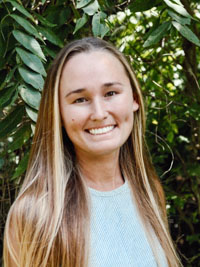
“Sharks play critical functional roles in coastal and open ocean ecosystems such as the regulation of prey populations. Despite their importance, even basic natural history information such as diet, range, and life cycle is unknown for many species. Diet is typically measured via lethal gut content analysis, which is often inaccurate and impossible and/or unethical to use for protected, rare, or long-lived species. Instead, I use fecal swabs to provide more accurate results by analyzing the DNA found in shark fecal matter.
On San Cristobal, Galápagos, there is a variation in the occupancy of juvenile scalloped hammerhead and blacktip sharks in nursery habitats. This could be attributed to niche partitioning and prey composition within the different nursery grounds. If both species are present, niche partitioning could cause juvenile scalloped hammerhead sharks to forage mainly from the seafloor. Therefore, their diet will consist of benthic organisms including crustaceans and demersal fish. Juvenile blacktip sharks forage within the water column and have a diet consisting of teleost fish.
With a more improved scientific understanding of shark nursery habitats and their driving forces for occupancy (i.e. prey sources and inter/intraspecies competition), we can inform the Galápagos National Park of specific sites within the Galápagos Marine Reserve that should be zoned as protected or non-extractive use, thereby increasing the survival rate of juvenile sharks and improving global shark conservation.”
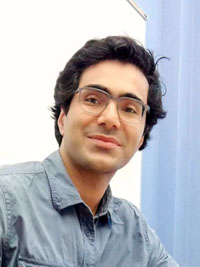
“The Aga Khan Award for Architecture recognizes architectural projects—primarily contemporary secular buildings—that serve Muslim communities. Established in 1977 by the 49th hereditary imam of a Muslim minority group called Ismailis, the award is often mistaken as a prize for Islamic architecture. What reinforces this confusion is that Prince Aga Khan VI (b. 1936), a Harvard graduate and a royal based in France, sponsored a joint program for Islamic Architecture at Harvard and MIT in 1979. Why would the leader of a religious minority—often condescendingly labeled as a sect—aspire to rethink architecture and the built environment of Muslims? What type of work does the award do for the Aga Khan and his underprivileged community?
My dissertation examines the Aga Khan Award to better understand the lived experience of minority Muslims and the identity struggles of Ismailis who are still labeled as the descendants of the Assassins by hostile Islamic orthodoxy. I scrutinize the ways in which the award moves away from the category Islamic and embraces the notion of pluralism as its guiding principle. As an attempt to distance himself from sectarian politics, the Aga Khan frames pluralism as secular and universalist. I will consult the archival material at the Aga Khan Documentation Center at MIT to trace the discursive shifts in the agenda of the award over the past 42 years.”
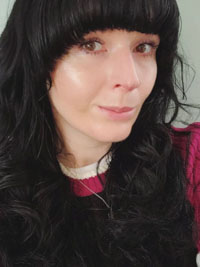
“From the late-8th through the early-12th centuries, the Norse people of Scandinavia crafted enigmatic objects that were bound to a cultural acceptance of the supernatural. Material things such as button plaques, wooden posts, small metal votives, weathervanes, and carved stone monuments were believed to hold and manipulate unseen, otherworldly forces. But how were they endowed with the supernatural powers that they were believed to have? In what contexts did such power manifest, and how did objects signal it to the beholder? By asking these questions, my dissertation investigates the supernatural conditions in which Norse objects were embedded.
My dissertation identifies the supernatural role of the craftsman in Norse society. Unlike their Christian contemporaries, who identified with the Neoplatonic position that crafted things were approximations of an ideal existing within the spirit and that only God was capable of true originality (as Theophilus indicated in De diversis artibus), I argue that the Norse believed in a human-driven, rather than divinely ordained, creative engagement with materials. Paying particular attention to metalsmiths, weavers, and carvers, it outlines that craftspeople were powerful figures who facilitated the manipulation of, or communication with, the divine via demiurgic labor and thus occupied a special role in society.”
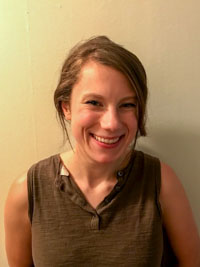
“A decade after the landmark National Labor Relations Act protected swelling industrial unionization and mere years before the Southern-based civil rights movement of the 1950s and 1960s, Congress passed the Labor Management Relations Act, or the Taft-Hartley Act, on June 23, 1947. The act allows states to pass Right-To-Work (RTW) laws, which prohibit union security agreements regarding a union’s right to compel union membership and fees, making it difficult to maintain union membership. By 1976, every former Confederate state passed some form of RTW legislation.
My dissertation project will chart a history of RTW laws across the American South between the 1940s and 1970s. Specifically, I plan to analyze how the campaign for RTW laws responded to and, later, affected working-class organizing in both labor and civil rights contexts. Recognizing the leadership Southern states played in the RTW movement and drawing from my previous archival findings connecting RTW with Southern segregationist business leaders, I center my research around the role of race and Southern politics in the RTW movement.”
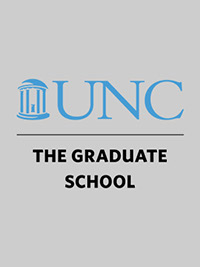
“My project proposes a mixed-methods study of hypertension among people living in Thailand who have experienced displacement from Burma, examining the ways in which structural inequities shape both people’s vulnerability to chronic ill health and their experiences living with hypertension. In the context of the Thailand-Burma border, chronic health conditions are emerging as local priorities, even while most health programming in the area continues to focus on prevention of infectious disease based on national borders. Preliminary research suggests that factors such as wage work in agriculture, dietary changes related to decreased land access, and experience of stigma based on ethnicity and legal status influence hypertension risk among non-Thai border residents.
By examining the experience of these determinants of ill health, I aim to deepen understanding of the physiological and psychosocial stressors contributing to hypertension in border communities. My study will also offer insight into non-Thai border residents’ access to and interactions with healthcare services in Thailand for management of chronic illness, and will consider how historical processes of conflict, displacement, and dispossession in the Thailand-Burma border area influence these experiences of chronic ill health. In doing so, I seek to link syndemic theory and research in migration and health with the anthropology of displacement.”
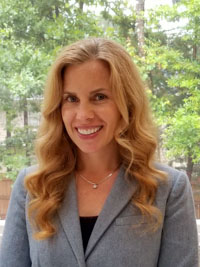
“Trachoma, a disease of the eye caused by infection with the bacterium Chlamydia trachomatis, is the leading infectious cause of blindness. It disproportionately affects the world’s most impoverished people. World Health Organization (WHO)-coordinated efforts to eliminate trachoma as a public health problem have dramatically reduced the burden of disease using the ‘SAFE’ strategy: ‘S’urgery for advanced, blinding disease, ‘A’ntibiotics to clear infection, ‘F’acial cleanliness and ‘E’nvironmental improvement to reduce transmission. However, 44 countries have yet to meet elimination targets. To accelerate progress, research is needed to identify approaches that enhance SAFE strategy effectiveness.
My dissertation uses data collected from the largest series of infectious disease surveys ever conducted, the Global Trachoma Mapping Project and its successor, Tropical Data. First, I am looking for evidence of gender inequity in the uptake of surgical services (‘S’) to treat advanced trachoma. Ensuring gender equity is critical to reach elimination goals as women both bear a greater burden of blindness from trachoma and have more difficulty than men accessing surgical care. Second, I am exploring the impacts of increased use of face washing water and latrines on the prevalence of inflammatory trachoma among children. Current evidence regarding the role of water, sanitation, and hygiene on trachoma is inconclusive, thus no targets have been established to help guide national programs in enhancing ‘E’ implementation. Results from these studies will provide additional evidence to optimize implementation of the SAFE strategy.”
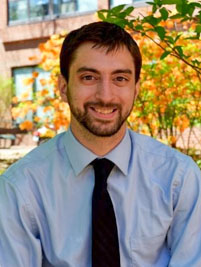
“A growing demand for college-educated workers is outpacing the college completion rate, leading to rising economic inequality and workforce shortages in occupations such as healthcare. To address this, many new education initiatives aim to increase college enrollment and completion by encouraging or requiring high school students to engage in more college preparatory activity. However, these efforts may be ineffective if they primarily impact students who remain academically underprepared or who face other barriers to college entry. Therefore, to examine the effectiveness of this strategy, I evaluate the impact of three such popular policies and programs.
First, I estimate the impact of a state providing free in-school ACT/SAT testing for all 11th graders on college enrollments; second, I estimate the effect of raising high school math and science graduation requirements on high school graduations, college enrollments, and college completions; and third, I estimate the impact of Early College High Schools (ECHS), which provide students with access to up to two years of college credit during high school, on students’ likelihood of completing STEM (science, technology, engineering, and math) degrees. In the first two, I compare changes in outcomes over time in states that enacted policy changes to those that did not. In the third, I compare outcomes for former ECHS students to a comparable group of non-ECHS students.”

“Disasters reveal. They are magnifying lenses through which we can better see how our systems fail to ensure security and well-being for many. Moreover, environmental disasters show which members of the population are least valued and most vulnerable. Disasters resulting in significant loss of life inordinately affect older adults. For example, adults aged 60 and over comprised the majority of Hurricane Katrina victims in Louisiana and Mississippi. Even so, age, and how it intersects with race, gender, class, and disability, remains an understudied factor of disaster and everyday vulnerability.
My research considers what older adult disaster vulnerability reveals about the experience and conceptualizations of old age on the Gulf Coast and in the United States. How is elder vulnerability socially, culturally, and politically constructed? What does it reveal about how Americans (de)value life after a certain age? How do older adults think about their lives and social roles? Given the realities of increasingly severe weather events due to climate change and an aging population, these are urgent questions that uncover the definitions and limits of personhood for older adults living in America.
To address these questions, I draw on methodologies and theoretical tools from critical disaster studies, folklore, and care ethics. Oral history will serve as a method for understanding histories of disaster and landscapes of aging as well as a tool for intergenerational community organizing. ”

“Older adults are active in online information consumption, but they are more likely to encounter web search challenges due to age-related deficits in cognitive performance and the lack of technical experience. A spoken conversational search (SCS) system allows users to retrieve online information over spoken dialogue, such as Apple Siri or Google Voice Search. The SCS search paradigm renders a more natural and human-like interaction experience than traditional search engines and potentially ameliorates the age-related discrepancy. However, little is known regarding how older adults may interact with and perceive an SCS and how the SCS system should be designed to adapt to age-related deficits.
My research aims to gain empirical insights into older adults’ behavioral profile in terms of the interaction with and perceptions of the SCS paradigm. Specifically, I will use the Wizard of Oz method and conduct user experiments under search tasks with various difficulties to investigate age-related differences in the SCS interaction. It also identifies the underlying factors to the variance from cognitive characteristics and domain knowledge perspectives. The findings will inform an inclusive design of the SCS paradigm and deepen the understanding of aging impacts on the SCS interactions.”